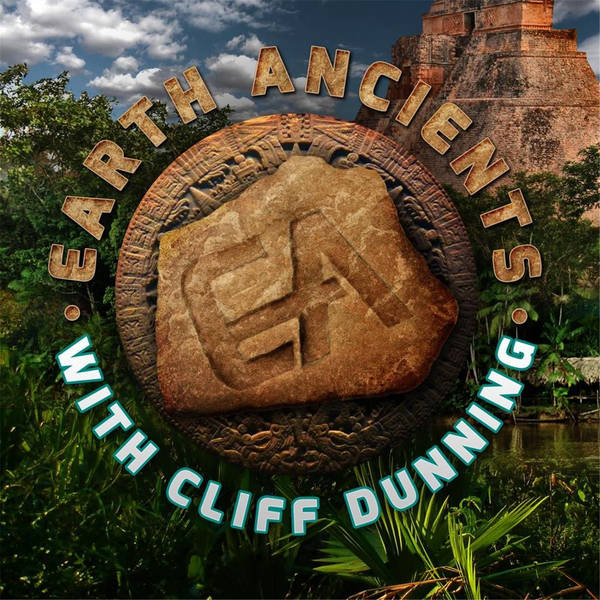
Dr. Edwin Barnhart: Mystery of the Olmec
The Olmec civilization is what is known as an archaeological culture. This means there is a collection of artifacts thought by archaeologists to represent a particular society. What is known about archaeological cultures is based on artifacts, rather than texts. In the case of the Olmec, archaeologists think artifacts found primarily on the northern half of the Isthmus of Tehuantepec in Mesoamerica from 1200–500 C.E. timeframe represent the Olmec society. The name Olmec was actually invented by scholars. Derived from the Nahuatl (Aztec) word “Olmecatl”, which means “inhabitant of the rubber country”, Olmec is a reference to the rubber production in the area where many of the artifacts have been found.
There are several Olmec sites thought to be important centers of activity, of which San Lorenzo and La Venta are the most significant. San Lorenzo, about 56 kilometers (35 miles) south of the Gulf of Mexico in the modern Mexican state of Veracruz, was at its height around 1150 to 900 C.E. La Venta, east of San Lorenzo and closer to the Gulf Coast (15 kilometers/9 miles) in the modern Mexican state of Tabasco, reached its height in about 900–500 C.E.
Research at these and other sites has led to the following insights. The Olmec diet initially included foods from fishing and hunting. Maize and other crops were a later addition to their foodstuffs. The Olmec created massive monuments, including colossal stone heads, thrones, stela (upright slabs), and statues. They may have been the originators of the Mesoamerican ball game, a ceremonial team sport played throughout the region for centuries. They also built earthen mounds and pyramids, and ceramics of several types that became common throughout a broad region influenced by the Olmec civilization.
The Olmec Civilization was one of the most influential ancient civilizations of the early Americas, and though its dominance of the region faded in the last centuries before the Common Era, the Olmec civilization is commonly thought to be the “mother culture” of many other cultures that appeared in the region in later years. These cultures, such as the Maya, Zapotec, Totonac, and Teotihuacán civilizations have unique art, architecture, and cultures that separate them from each other, but many historians trace all of these cultures back to their shared Olmec heritage.
Maya Exploration Center Director Dr. Ed Barnhart has almost three decades of experience as an archaeologist, an explorer and an instructor. He is a Fellow of the Explorers Club, has published many papers, and appeared in over a dozen documentaries about ancient civilizations. His involvement in Maya studies began in 1990 as an archaeological intern in the ruins of Copan, Honduras. In January of 1996 he was invited to return to Copan and help the University of Pennsylvania excavate the early acropolis and the tomb of the city's lineage founder.
Become a supporter of this podcast: https://www.spreaker.com/podcast/earth-ancients--2790919/support.
There are several Olmec sites thought to be important centers of activity, of which San Lorenzo and La Venta are the most significant. San Lorenzo, about 56 kilometers (35 miles) south of the Gulf of Mexico in the modern Mexican state of Veracruz, was at its height around 1150 to 900 C.E. La Venta, east of San Lorenzo and closer to the Gulf Coast (15 kilometers/9 miles) in the modern Mexican state of Tabasco, reached its height in about 900–500 C.E.
Research at these and other sites has led to the following insights. The Olmec diet initially included foods from fishing and hunting. Maize and other crops were a later addition to their foodstuffs. The Olmec created massive monuments, including colossal stone heads, thrones, stela (upright slabs), and statues. They may have been the originators of the Mesoamerican ball game, a ceremonial team sport played throughout the region for centuries. They also built earthen mounds and pyramids, and ceramics of several types that became common throughout a broad region influenced by the Olmec civilization.
The Olmec Civilization was one of the most influential ancient civilizations of the early Americas, and though its dominance of the region faded in the last centuries before the Common Era, the Olmec civilization is commonly thought to be the “mother culture” of many other cultures that appeared in the region in later years. These cultures, such as the Maya, Zapotec, Totonac, and Teotihuacán civilizations have unique art, architecture, and cultures that separate them from each other, but many historians trace all of these cultures back to their shared Olmec heritage.
Maya Exploration Center Director Dr. Ed Barnhart has almost three decades of experience as an archaeologist, an explorer and an instructor. He is a Fellow of the Explorers Club, has published many papers, and appeared in over a dozen documentaries about ancient civilizations. His involvement in Maya studies began in 1990 as an archaeological intern in the ruins of Copan, Honduras. In January of 1996 he was invited to return to Copan and help the University of Pennsylvania excavate the early acropolis and the tomb of the city's lineage founder.
Become a supporter of this podcast: https://www.spreaker.com/podcast/earth-ancients--2790919/support.
